Swinburne students at IAAC Global Summer School progress work with mycelium
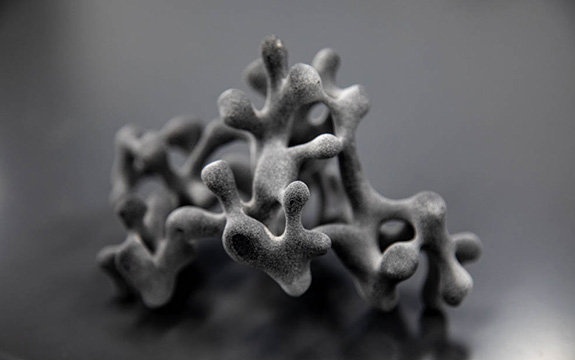
In Summary
- Program focus on sustainability and optimised structures
- Students visualise and test performance of structural forms in 3D
- Growing and machining regenerative mycelium structures
The Institute for Advanced Architecture of Catalonia (IAAC) and Swinburne School of Design continue to share their passion for architectural experimentation and sharing of ideas in the second IAAC Global Summer School workshop at Swinburne.
In 2018 students created mycelium forms by incubating and growing the vegetative part of fungus in moulds in Swinburne’s biology labs. Coordinators Senior Lecturer in Architectural Design, Canhui Chen, and Course Director of Architecture, Associate Professor John Sadar, progressed these investigations for the 2019 workshop to look at more sustainable ways of creating mycelium structures.
The 2019 IAAC Global Summer School at Swinburne focused on aspects of sustainability and the structural advantages of topologically optimised architectural structures. Architecture students were introduced to new digital structural optimisation workflow tools using proprietary apps and software programs such as Ameba, to visualise and test the performance of structural forms in 3D. Small scale 3D printed nylon form studies were created so the students could learn about the new workflow.
3D digital visualisation of architectural structure, video by Canhui Chen
“Students created computer-generated tree-branch-like node structures using Bidirectional Evolutionary Structural Optimisation. By providing a set of load conditions, material parameters and a set of boundary conditions and support locations, an algorithm analysed input geometry, load conditions and structural performance - removing excess material not required and making the structures lightweight and more efficient for load bearing,” explains Mr Chen.
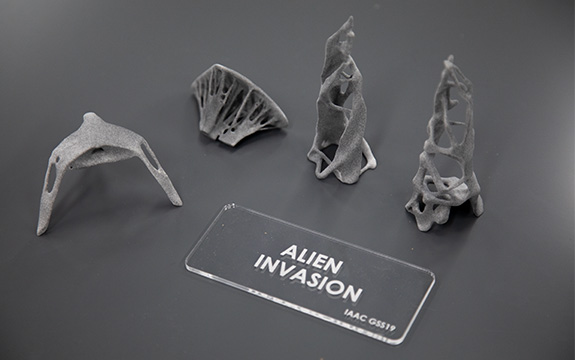
Ameba Tower 3D printed form series, image by Canhui Chen.
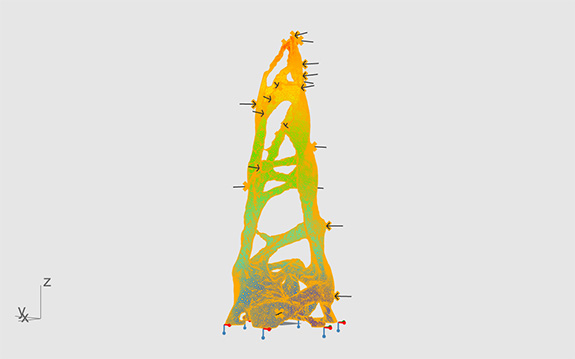
Digital analysis of Ameba Tower.
The form generated by the topological optimisation process was then discretised into manufacturable pieces, allowing the workshop participants to fabricate it at a large scale. The large laser-cut form was used as the scaffold for mycelium cultivation. The substrate, mixed with mycelium culture, was placed inside the mould and transferred into an incubator in the biology lab over the two-week workshop period.
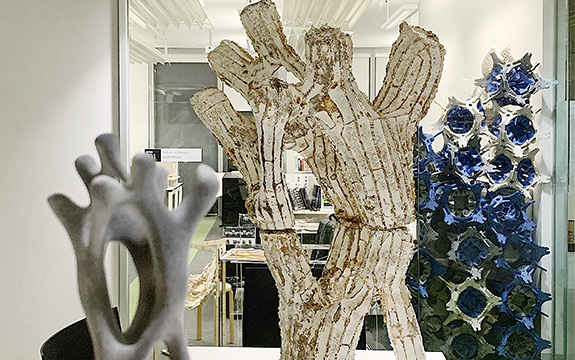
Small scale nylon form (left) and mycelium form (centre), image by Canhui Chen.
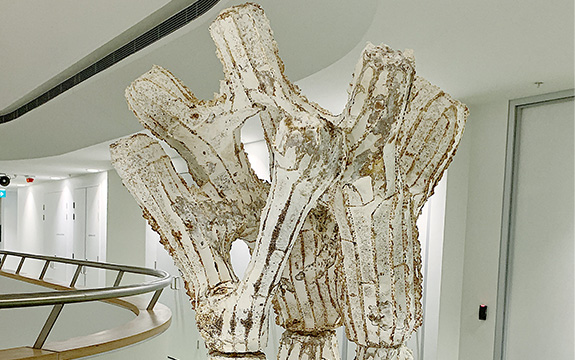
Large branch-like mycelium form, image by Canhui Chen.
Looking for more sustainable production methods, students investigated CNC machining of mycelium and the possibility of cutting a form from a preformed block of mycelium grown in a standard reusable incubating bag.
Machining the mycelium into a form reduces the need for multiple moulds and reduces the amount of material required to create a mycelium structure. The mycelium offcuts and machining waste are easily reused.
Machining mycelium in the workshop, video by Canhui Chen
The machining experiments were more successful than anticipated and have opened up new opportunities for the production of articulated architectural mycelium surfaces. As a living material, the machined mycelium surface continues to regenerate and change over time.
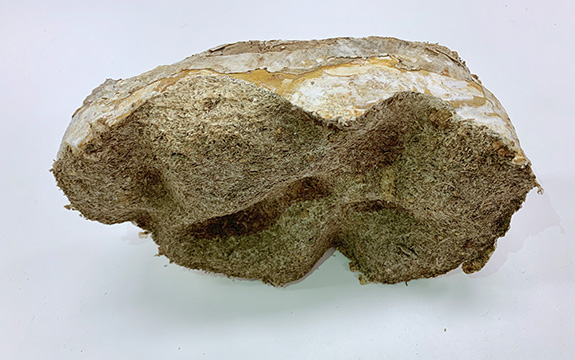
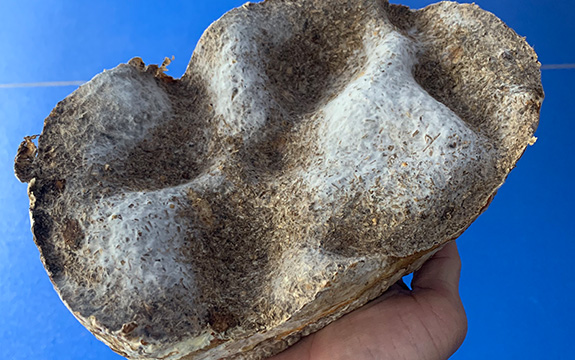
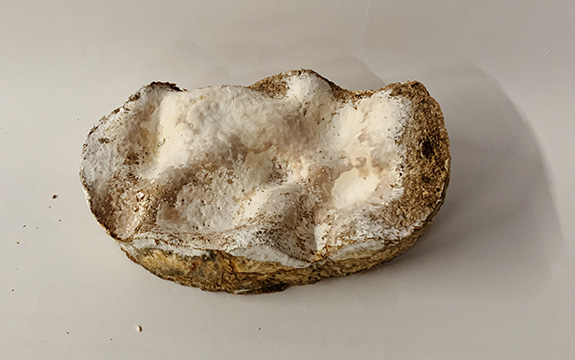
The machined mycelium surface regenerates and reforms after machining, images by Canhui Chen.
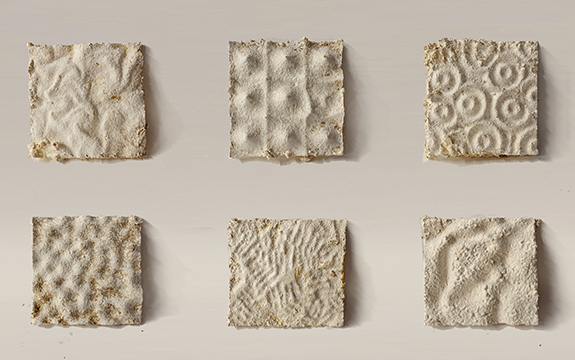
Collection of mycelium surface designs, image by Canhui Chen.
Load testing mycelium in the Swinburne engineering lab, video by Canhui Chen
“This opens up exciting opportunities to create possible living architectural applications,” says Mr Chen.
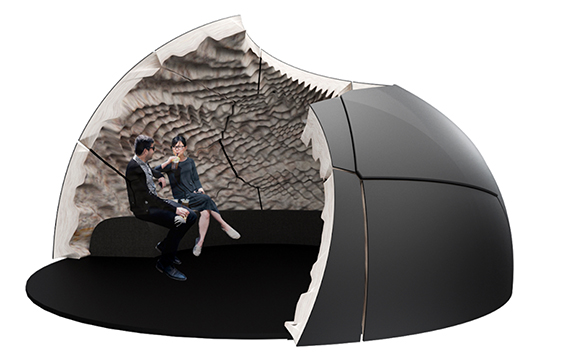
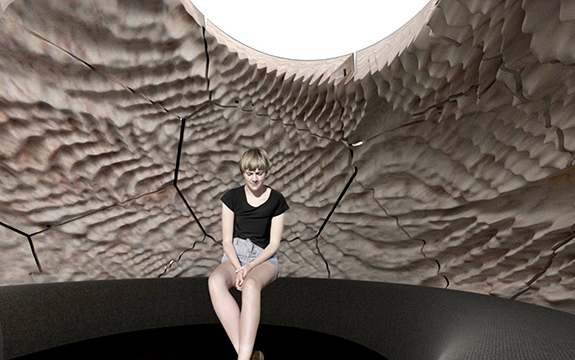
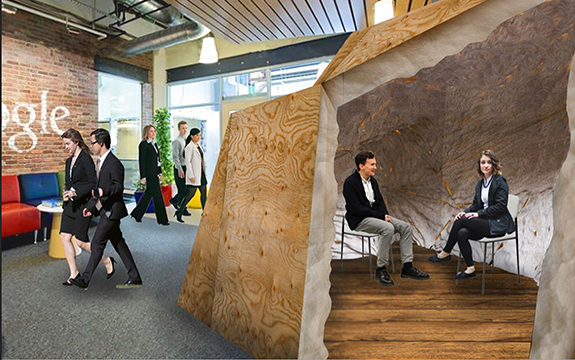
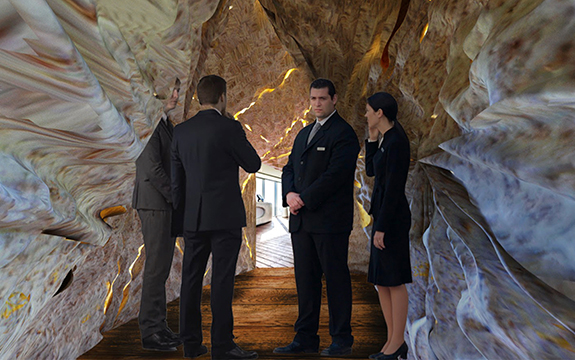
Concepts for living architecture - mycelium meeting pods, images by Canhui Chen.
Mycelium is now being tested for its structural and acoustic properties in the Swinburne engineering lab.

